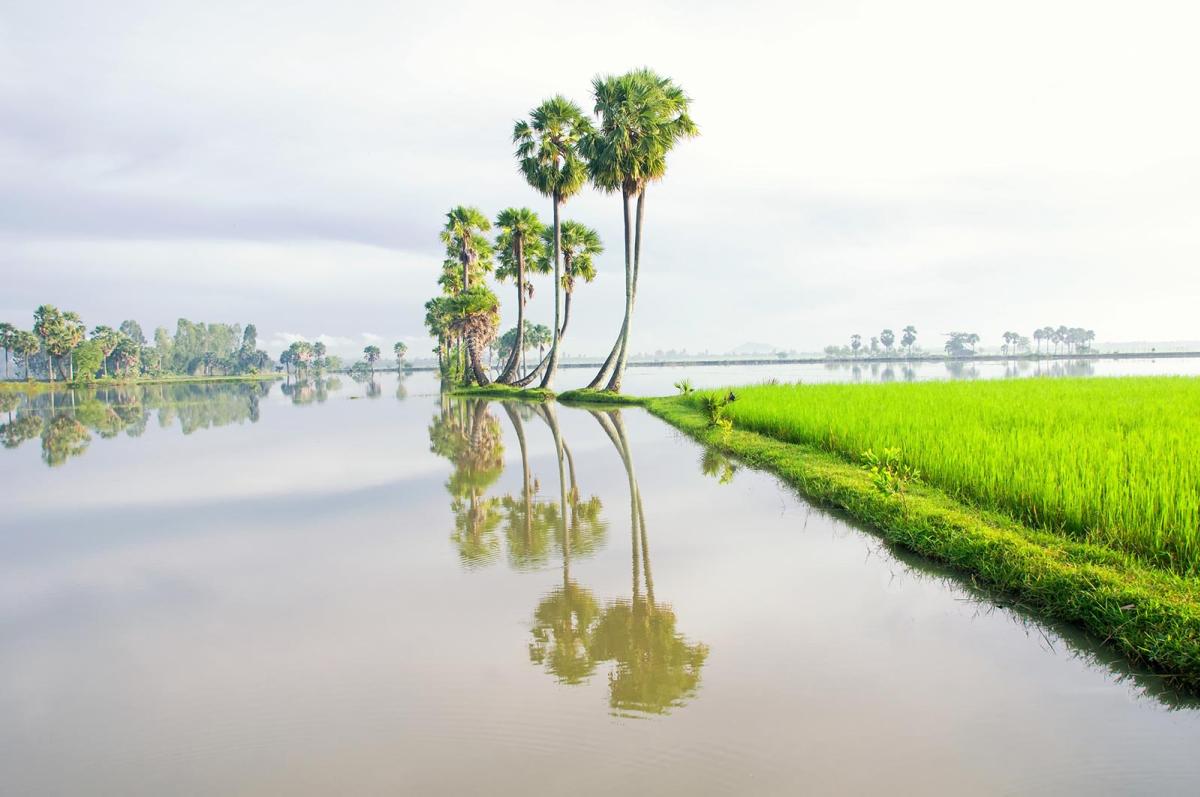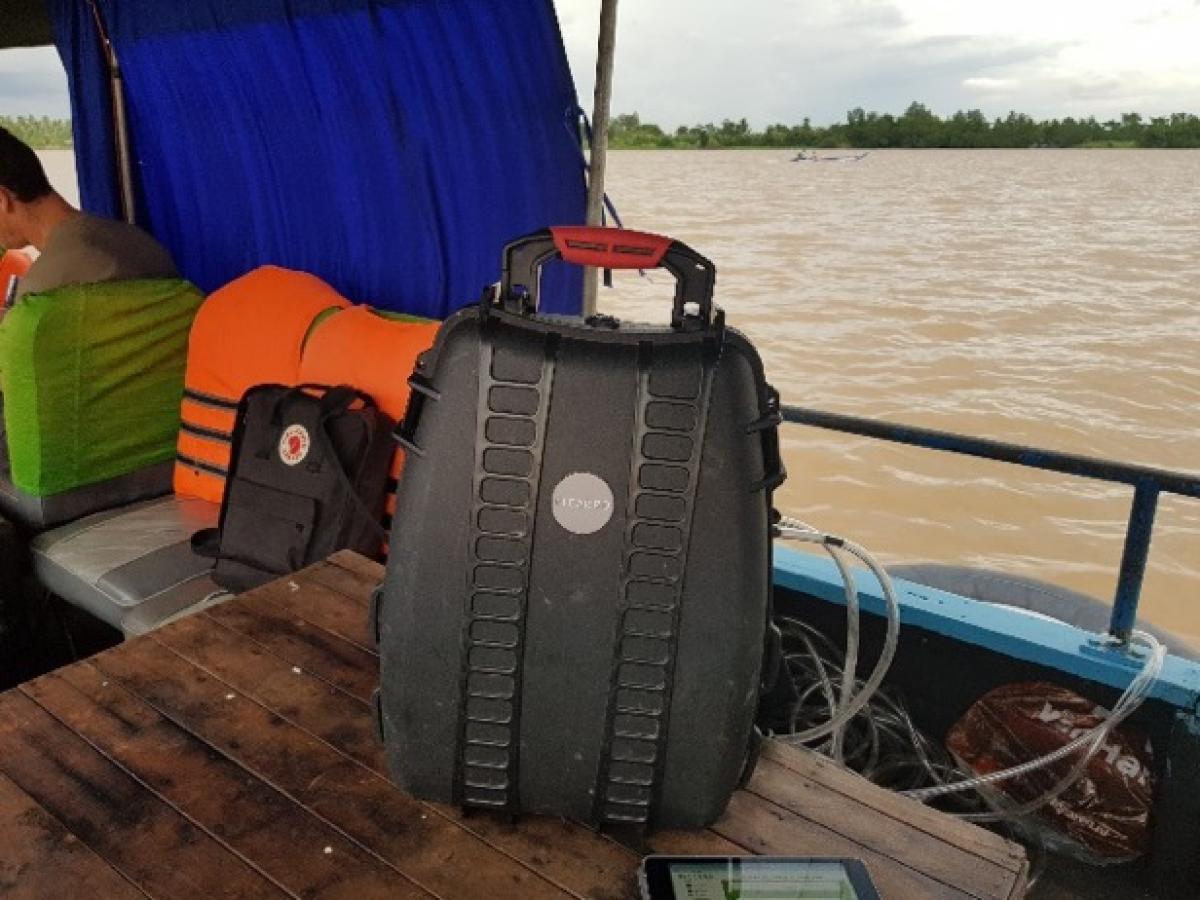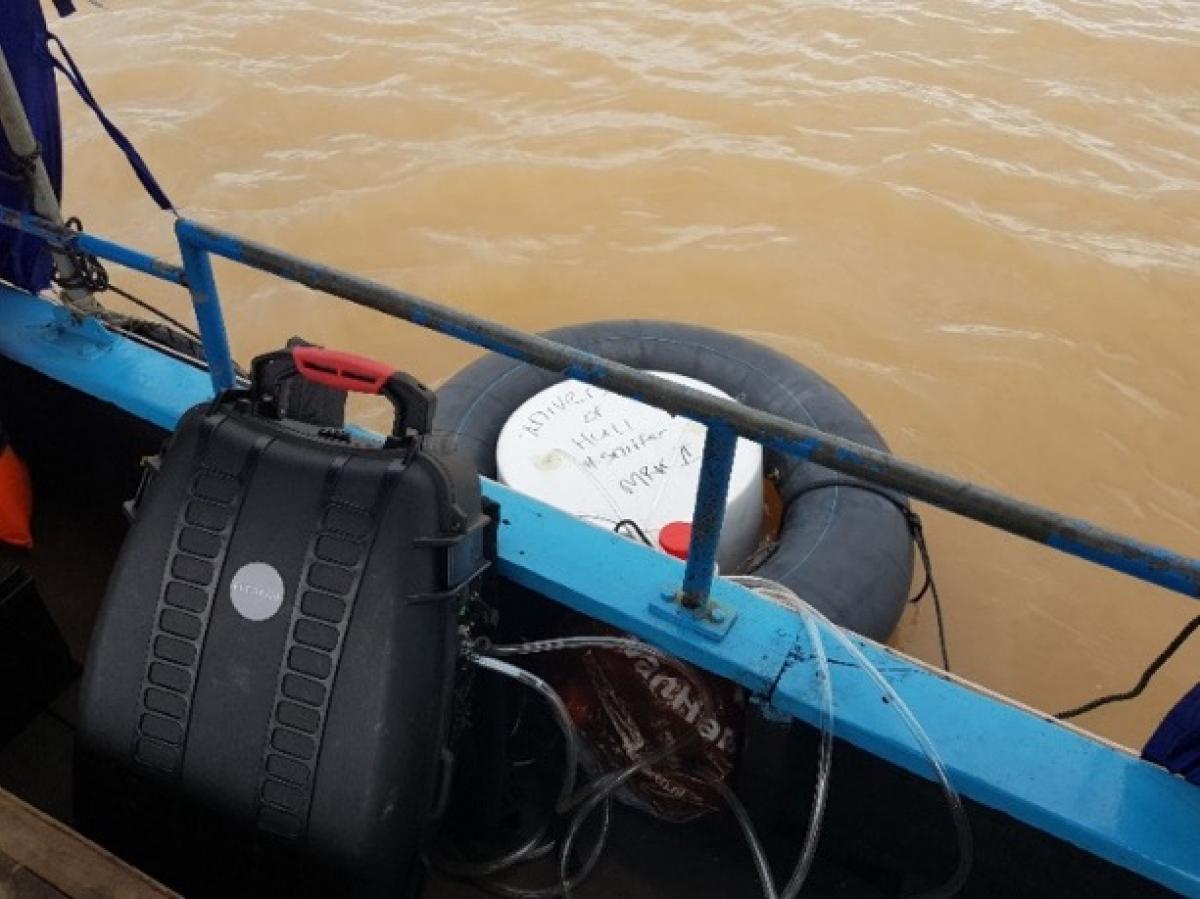At Picarro, we enjoy hearing how research groups are using our systems in their projects. Christopher Hackney and Daniel Parsons from the University of Hull (UK) are working on a series of UK Research Council and Newton Fund funded projects(e.g. http://www.stelar-s2s.org) with partners from the Universities of Southampton, Exeter (UK), Illinois (USA) and Can Tho (Vietnam) and the Southern Institute of Water Resources Research (Vietnam)on the Mekong Delta in SE Asia. Each year this system transports ~80+ mega tons of sediment to the ocean. This project is trying to understand exchanges of sediment during the monsoon flood pulse, when a vast amount of sediment is sequestered onto the floodplains and also returned to the channel via bank erosion. In this project, they are also quantifying the release of organic carbon fluxes both in the river channel and also in the backwater floodplain areas where methane outgassing is likely important as well. The coupling of a floating chamber to the new-generation, light-weight, portable GasScouter G4301 enabled them to monitor the carbon dioxide and methane effluxes with a high temporal and spatial resolution.
Below is a summary about their experience. We thank them for sharing this story.
Quantifying the earth’s carbon and methane cycles are vitally important for understanding the impact that anthropogenic activities are having on the climate. One of the last unconstrained sections of the carbon cycle is that weathering processes in rivers and inland waters. Rivers comprise >1% of the global land surface but act as trans-continental conveyor belts transferring dissolved and stored organic material many thousands of kilometers. Estimates suggest that river systems may contribute 1.8 Pg of carbon dioxide per year to the global atmosphere (Raymond et al., 2013). Similarly, estimates of methane efflux from rivers are poorly constrained, but it is tentatively assumed to equate to 4% of the global CO2 efflux (Cole et al., 2007). We are particularly interested in quantifying the efflux of carbon dioxide and methane in large, tropical rivers where high biological productivity results in the deposition, storage and reworking of high levels of organic material.
In September 2017, researchers from the Universities of Hull and Southampton, UK, deployed a Picarro GasScouter G4301 mobile gas concentration analyzer on the Mekong Delta in Cambodia and Vietnam (see Figure 2). A floating chamber was used to monitor the efflux from the water surface as the team transited downstream, capturing variations in carbon dioxide and methane outgassing (see Figure 3). By capturing information about the morphology of the river bed, the three-dimensional flow structures within the river as well as measuring the carbon dioxide and methane fluxes with the GasScouter, we are able to discriminate any influence of the river bed morphology and the flow on the rates of outgassing. This data will enable the team to refine estimates of carbon dioxide and methane outgassing from tropical rivers, as well as providing new insight into the impacts river bed morphology and morphodynamics play in modulating the rates of carbon and methane outgassing from river systems.

Figure 2: Map of the Mekong Delta and the study area: The white line indicates the track on the Bassac river, a distributary of the Mekong near the city of Can Tho, where the carbon dioxide and methane outgassing was monitored using the GasScouter (see Figure 3 for data). The efflux, flow dynamics and bed depth were monitored while drifting downstream.

Figure 3: Outgassing of carbon dioxide and methane from the Mekong Delta (see Figure 2 for track): The increase in carbon dioxide and methane efflux towards the end of the section correlates with a decrease in the river bed depth. As the river becomes shallower, mixing of the river water increases so that deeper water is carried to the surface leading to more outgassing.
References
Cole J. J., Prairie Y. T., Caraco N. F., McDowell W. H., Tranvik L. J., Striegl R. G., Duarte C. M., Kortelainen P., Downing J. A., Middelburg J. J. and Melack J. (2007) Plumbing the Global Carbon Cycle: Integrating Inland Waters into the Terrestrial Carbon Budget. Ecosystems10, 172–185. Available at: https://link.springer.com/10.1007/s10021-006-9013-8.
Raymond P. A., Hartmann J., Lauerwald R., Sobek S., McDonald C., Hoover M., Butman D., Striegl R., Mayorga E., Humborg C., Kortelainen P., Dürr H., Meybeck M., Ciais P. and Guth P. (2013) Global carbon dioxide emissions from inland waters. Nature503, 355–359. Available at: http://www.nature.com/articles/nature12760.
| Attachment | Size |
|---|---|
| G4301-Hull-fig2.jpg (90.78 KB) | 90.78 KB |
| G4301-Hull-fig3.png (27.69 KB) | 27.69 KB |


